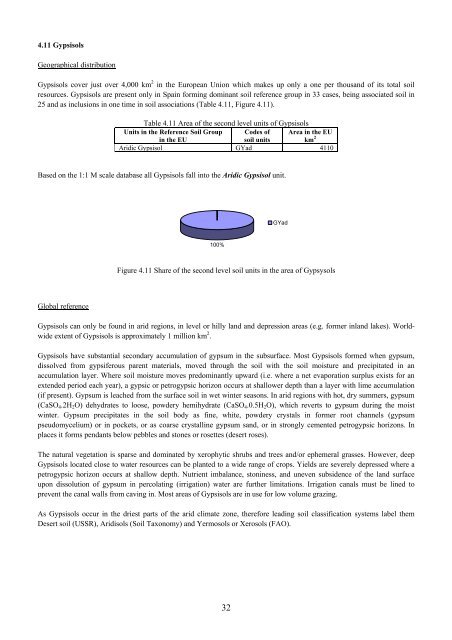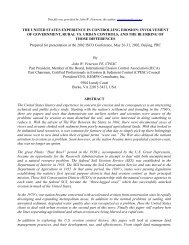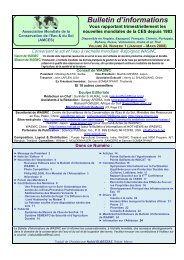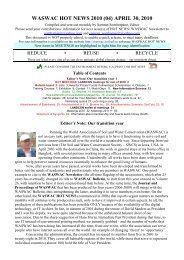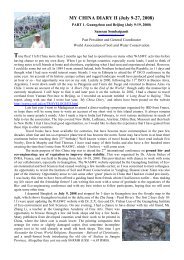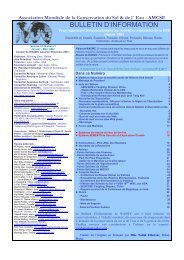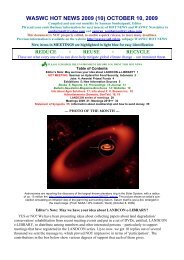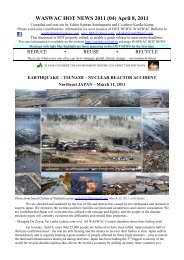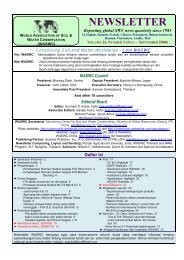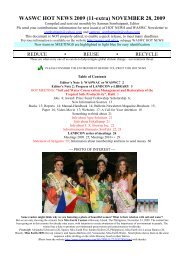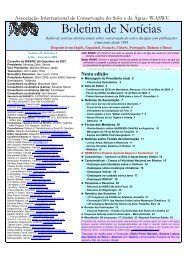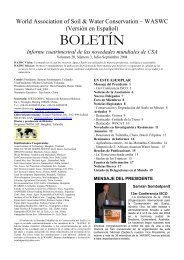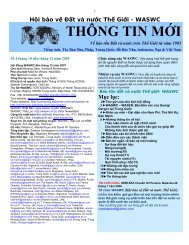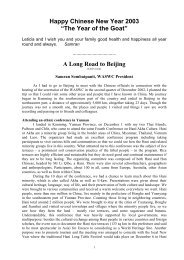Soils of the European Union - European Soil Portal - Europa
Soils of the European Union - European Soil Portal - Europa
Soils of the European Union - European Soil Portal - Europa
You also want an ePaper? Increase the reach of your titles
YUMPU automatically turns print PDFs into web optimized ePapers that Google loves.
4.11 GypsisolsGeographical distributionGypsisols cover just over 4,000 km 2 in <strong>the</strong> <strong>European</strong> <strong>Union</strong> which makes up only a one per thousand <strong>of</strong> its total soilresources. Gypsisols are present only in Spain forming dominant soil reference group in 33 cases, being associated soil in25 and as inclusions in one time in soil associations (Table 4.11, Figure 4.11).Table 4.11 Area <strong>of</strong> <strong>the</strong> second level units <strong>of</strong> GypsisolsUnits in <strong>the</strong> Reference <strong>Soil</strong> Groupin <strong>the</strong> EUCodes <strong>of</strong>soil unitsArea in <strong>the</strong> EUkm 2Aridic Gypsisol GYad 4110Based on <strong>the</strong> 1:1 M scale database all Gypsisols fall into <strong>the</strong> Aridic Gypsisol unit.GYad100%Figure 4.11 Share <strong>of</strong> <strong>the</strong> second level soil units in <strong>the</strong> area <strong>of</strong> GypsysolsGlobal referenceGypsisols can only be found in arid regions, in level or hilly land and depression areas (e.g. former inland lakes). Worldwideextent <strong>of</strong> Gypsisols is approximately 1 million km 2 .Gypsisols have substantial secondary accumulation <strong>of</strong> gypsum in <strong>the</strong> subsurface. Most Gypsisols formed when gypsum,dissolved from gypsiferous parent materials, moved through <strong>the</strong> soil with <strong>the</strong> soil moisture and precipitated in anaccumulation layer. Where soil moisture moves predominantly upward (i.e. where a net evaporation surplus exists for anextended period each year), a gypsic or petrogypsic horizon occurs at shallower depth than a layer with lime accumulation(if present). Gypsum is leached from <strong>the</strong> surface soil in wet winter seasons. In arid regions with hot, dry summers, gypsum(CaSO 4 .2H 2 O) dehydrates to loose, powdery hemihydrate (CaSO 4 .0.5H 2 O), which reverts to gypsum during <strong>the</strong> moistwinter. Gypsum precipitates in <strong>the</strong> soil body as fine, white, powdery crystals in former root channels (gypsumpseudomycelium) or in pockets, or as coarse crystalline gypsum sand, or in strongly cemented petrogypsic horizons. Inplaces it forms pendants below pebbles and stones or rosettes (desert roses).The natural vegetation is sparse and dominated by xerophytic shrubs and trees and/or ephemeral grasses. However, deepGypsisols located close to water resources can be planted to a wide range <strong>of</strong> crops. Yields are severely depressed where apetrogypsic horizon occurs at shallow depth. Nutrient imbalance, stoniness, and uneven subsidence <strong>of</strong> <strong>the</strong> land surfaceupon dissolution <strong>of</strong> gypsum in percolating (irrigation) water are fur<strong>the</strong>r limitations. Irrigation canals must be lined toprevent <strong>the</strong> canal walls from caving in. Most areas <strong>of</strong> Gypsisols are in use for low volume grazing.As Gypsisols occur in <strong>the</strong> driest parts <strong>of</strong> <strong>the</strong> arid climate zone, <strong>the</strong>refore leading soil classification systems label <strong>the</strong>mDesert soil (USSR), Aridisols (<strong>Soil</strong> Taxonomy) and Yermosols or Xerosols (FAO).32


